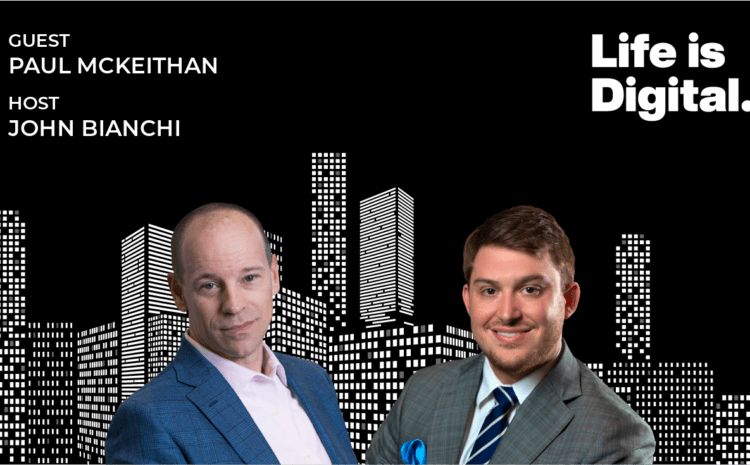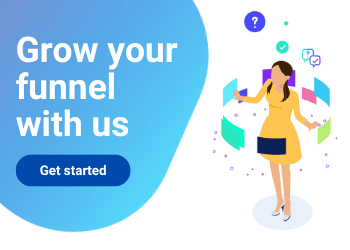Creating Transparency in the Digital Transformation
John: Hey everyone, welcome to Life is Digital. I am your host, John Bianchi. Get ready to learn about digital marketing as we share our knowledge and perspectives on current trends, best practices and actionable tips to help you grow your business in the digital age. While I am so excited this morning, folks, I have a very good friend with me today, Paul McKeithan. He is the head of Digital Business Development for Buhler Group. Paul, so great to have you on board this morning.
Paul: Pleasure’s all mine, John.
Learn more about the importance of digital with Paul McKeithan with Buhler Group
John: You know, Paul, I think this is going to be a really interesting conversation for our listeners this morning because in the pre-show, we touched on things from digital transformation, how prospecting is changing, and how businesses need to shift in this new environment to drive revenue and bottom line, sales growth, I wonder if you could share maybe a key industry fact from some of the things that we were speaking about before we hop in to the meat of the show.
Paul: Absolutely, John, I think as we were discussing, I believe that transparency is one of the things that people are chasing right now. It’s the idea of transparency… Should I share my data? I think what we see now is a shift from… “should I share my data?” to “When? Why? How do I share my data?” And so that’s a bit of the conversation that’s interesting to have right now is walking our customers through those decision processes of how, when and who should I share my data with? And I think that’s an interesting conversation to have.
How is Buhler helping their customers make better decisions in the digital transformation?
John: That’s a really fascinating point, because I think in marketing and in sales, data really is our guide post or marker. It’s how we make better decisions. It’s how we help our clients make better decisions. And, I think that’s important because I think the idea of data has always been sometimes this nebulous thing where people are like, “Well, it’s a report, right? What do I do with that?” How are you helping your customers in this digital transformation make better decisions? What are some strategies you’re employing and obviously they want to drive bottom line growth, so how are you helping them with that?
Paul: I want to pick apart one word you said in there I think is really key is helping them… And, I think that’s really the key to it. A lot of times the tendency or the temptation is to focus on helping the data or collecting better data or adding a sensor here or there. I live in the manufacturing space, specifically the manufacturing space, and we think about smarter machines. And, especially in that industrial manufacturing space, there’s a tendency just to say, “Well, I already have data, I already have controls. I already have a dashboard.” What we’re seeing now though, especially in this time, is to have the opportunity to connect and help the person, and so it’s really throughout these industry terms of IOT or Industry 4.0, to me, all that is an enabler to help the people make better decisions based off of data, and it goes back to when I talk to my customers about sharing data. Data has value, but it doesn’t have any value unless or unless it’s traded. It’s kind of like jewelry. It means nothing or doesn’t have any value unless you sell it. So, it needs to be used and shared, and that’s where you get the true collaboration.
How has marketing and sales changed during the current times?
John: I think that makes just perfect sense, and I love how you’re framing that of being service-focused and client-centric because I think in this new technology shift in the digital transformation, I’ve noticed that they’re initially, I would say, pre the COVID environment, there may have been a hesitation to fully take that leap and invest in some of the technologies that I think companies are now seeing are potentially invaluable. Just the fact that everyone’s on Zoom calls and we’re doing this over Google Hangouts, is just showing how digital and how technology can transform things. I think something that we’re seeing is that businesses now realize it’s not, and if it’s, we have to make this difference and change… You’re the head of digital business development, how has prospecting or marketing changed in your perspective both in your industry and maybe what you’re seeing from your perspective? Because, I’m sure that there are new things in new ways that you are having to go about developing relationships, conversations and helping to drive bottom line growth for Buhler as well. Right?
Paul: And again, John, absolutely, it’s a very personal thing, different segments and industries, no matter what you’re selling, may have a different type of sales rhythm or customer engagement type rhythm. In my business, it’s a very… You could call it a major account-type sales, long, yearly, long lead times and stuff, but there’s still a very personal relationship after there, so we’re trying to find out the customer’s needs and values. That’s not changed. We’re still trying to do that. We’re thrusted, like you said, in doing it in a different way. Now, some of the challenges are doing it in a different way. It could be that you’re missing some of the social cues, if you will, we can gather so much. And although people are listening to us today… John and I now can actually see each other on video, and it helps in the conversation. So, one of the small tips I would gather, if you’re having a call or a Skype call or whatever media you use to have a call, share the video, if at all possible. It helps with those social cues, helps with the conversation.
Try to make it as engaging as possible. And, I think that’s the benefit to us being in this era and thrust in this area is that… I believe that we all get a little bit more human. The dog barks in the background. You see the artwork on the walls of the house, somebody’s in the T-shirt, hadn’t shaved in a week, but we’re all very human, and there’s actually a bit more intimacy in some way about this, so I don’t know if we’ll ever come out of this or change, or we’ll crunch back on this in the future, but I think at the end of all this day, I think this technology actually brings us closer together.
John: I think that’s an absolutely fascinating point, and I love that because you’re right. It’s no longer the white wall, glass table boardroom where all the decisions are potentially made, you do get to see into someone’s home. You might get a little bit different perspective of them, and it actually can feel more relational if done right and done well, like you’ve been saying so I think that that makes absolute sense, and I do hope that maybe my hope would be that as we move forward, we come to some sort of a hybrid of this.
How has content adapted during this time and what’s the results from that?
Sure, we can continue to do business if there is a challenge, if someone needs to stay home or someone wants to join that wasn’t able to attend, or there’s obviously that shrinking of the travel base right now. We can do business across many, many different orders where maybe travel was a restriction in the past when timelines are shortened. I wonder… how does that affect or change how you… For either the team or for the company where you’re seeing in the industry, how does that change how content is used, produced, and then managed for goals? Have you seen changes in how content is developed around these types of ideas?
Paul: Yeah, and I think it’s actually refreshing. I think we’ve fallen into this trap over the years of creating this… for lack of a better description, the sales content. I want to sell a product, sell a product. And we’re moving closer, like we said before, when I opened up the conversation was about into a service relationship piece, moving from solution providers to solution partners. Moving into this… what I would call the “digital relationship.” Again, it’s that intimacy that we’re trying to create and so the content from that has to be a little bit more educational. Right? So, I’m not going to give a brochure or documentation or something that talks about my product or talks about my position and things of that nature. It’s going to be more about, let me educate and the best way I can… Because ultimately what I’m trying to do in this collaboration is to share my knowledge, and if I share my knowledge with someone that creates education, it creates a relationship and creates trust. And business can come from there. I think content is something that has to be more educational and more relative to actions now than it would be to just a solution or a product.
What’s the most important element in a client relationship?
John: That makes absolute sense. And I think that that’s the shift from, like you said, that kind of traditional salesy or a sales person mentality where I’m just going to tell you all the products, benefits and features of this piece, and you can go and shop it around, but we’ve got the best one. Whereas I think, like you said, now, and I’m noticing the same thing, I think people are going to start making decisions based on who they want to work with and the “why” will be there if the product and service still has that massive value. So I could see the decision being made on the who, because there’s a lot of great companies doing a lot of great things, and obviously you’re going to have your industry leaders, but if you’ve got two competitors, wouldn’t that decision comes down to who you can actually connect with, understands what’s important for that relationship? And, obviously people work with people they know, like and trust, and I think that that’s important as well. In this environment.
Paul: Absolutely, I think trust is key. Especially when you start talking about sharing your data. The relationship changes so much when you connect on a digital level, when you share your data. Once you see somebody make the relationship changes and the data is like that. If you will, right, the data, if I see behind the curtains of a customer and see their data, and you start behaving it and the opportunity that they reach new types of businesses there… So going back to that word partnership, I think customers or people would choose to do business with who they consider as a partner, and so you have to dive in as you’re developing products or product management or whatever, and talk about how to develop a partnership. So yet you might need a good product or something like that, but you also have to put work into, what does a partnership look like? How do I develop a partnership? And, it’s kind of like a marriage. How do you ask your customers how their day was or when they want a cup of coffee. And so you need to have those contact points, digital provides us those extra contact points, those extra insights, but we have to develop the products and solutions and the content to support those extra pieces and position yourself as a partner.
I think that’s the trend now is to get that partnership and do business with partners. We’ve been throwing that word around for many years, I think now the digital connection is the final enabler about it.
How should brands position themselves and tell their story?
John: That makes absolute sense. Do you feel that brands are going to have to shift, like you said, even their brand marketing towards what you’re talking about? That they’re going to have to be more visible, tell their story. Is it enough for a brand just to produce something and for lack of a better idea, while we’ve done it this way, we’ve been around… People know us, do they really know you though? And is it important for brands to tell their stories now differently and how they position themselves?
Paul: I think so. We’re working together, and so I’m not an expert in branding, so this… I need help in that area, and I would challenge other people to also get help in that, because the brand needs to do something… I’m positive of this, the brand needs to show what you’re trying to do and who you’re trying to be… Years ago, the idea of a company can be one of the three things- they can be a good product leader, development leader, or they can have a customer intimacy model or they can be the cheap… There’s this different threshold, I think that’s getting blurred a little bit, so your brand has to adapt to that. If you recognize one particular brand is being a product dominant technology leader, and now because of this digital relationship, they can also be intimate in that… They’re blurring that line, doing and being a product leader in intimacy. They don’t have to be sold on one thing alone anymore for brands, and brands need to catch up with that.
Key Takeaways
John: That… And I agree, and I think some of the things that we’ve worked on together that’s helping to tell that story has been critical and key… And I see that, you know, I see… And I think there have been great companies out there that have done this, and I think that everybody looks at in marketing like the Tom shoe – the case study way back in the day, right? They were the eco-friendly, the eco-conscious, the cause-driven marketing, and they had their rise, and obviously I think they ended up with some challenges, but that model of they had a story to tell that pulled people into why the brand was so impactful. And I think that started 10, 15 years ago, and I think maybe now the digital transformation can help complete that, where those who are going to stand really ahead of the competition or at the head of the pack, it’s because they’re willing, like you said, to be open and tell that story. Paul, I I knew this was going to be a great conversation and I’ve loved talking with you this morning about a few of these topics. I wonder if you could leave the audience with a couple of key takeaways from what we’ve chatted about today.
Paul: Absolutely. With the word transparency, let me modify that just a little bit, because there might be some people on the line that’s listening to this, you have a software background and coming from the digital side of things, and we spent a lot of this conversation talking about those being important to the visual transformation. But let’s put open in front of transparency and talk about this open transparency, because transparency has been a cool word for some time now. Well, I’ll be transparent, I have data and I have dashboards and stuff like that, the open part invites others to take a part of your journey, so if I have any advice that I would leave folks with is really focus on the who that’s being impacted, on the people that’s being impacted, look at the technology as the enabler of that, the technology is important, the sensors are important, the data is important, but it shouldn’t dominate the conversation because it’s the enabler that allows it to get things done right? So commit, trust, share your data. Find the value of it. Those are the areas that I would focus on and be open with your transparency.
John: I think that term transparency and inviting people in to become… If I can encapsulate it from our conversation, like he said, come into the family, be part of the story, be willing to share the information that you both have good, bad and ugly, to make better decisions in that partnership. That’s really, I think, the next step in the digital transformation is to create that visibility between your different partners, like you said, as we’re all working towards common goals, which is obviously to do the best work and the greatest… The greatest things that we can do together. Paul, this has been a fantastic conversation. Thank you so much for taking the time to hop on board with me today, and I really think our audience will glean some great things from our conversation.
Paul: My pleasure, John. Absolutely, a pleasure to join and talk with you… Good conversation as always.
John: Awesome, well, I also appreciate you, the audience, for joining us for this episode of Life is Digital. Once again, I’m your host, John Bianchi. Please remember to rate, review and subscribe to the show until next time. Don’t stop marketing.












